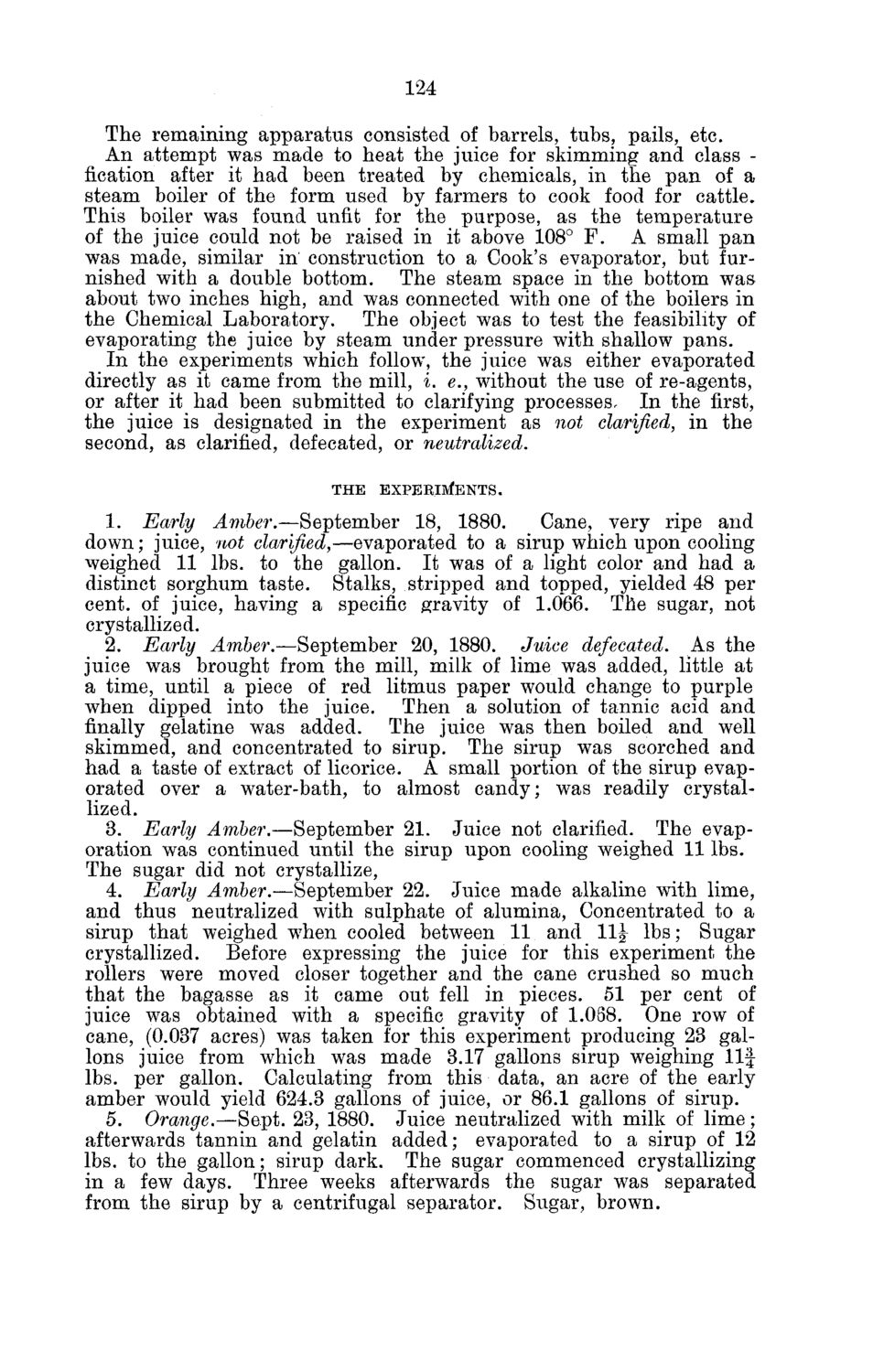| |
| |
Caption: Board of Trustees Minutes - 1880
This is a reduced-resolution page image for fast online browsing.

EXTRACTED TEXT FROM PAGE:
124 The remaining apparatus consisted of barrels, tubs, pails, etc. An attempt was made to heat the juice for skimming and class fication after it had been treated by chemicals, in the pan of a steam boiler of the form used by farmers to cook food for cattle. This boiler was found unfit for the purpose, as the temperature of the juice could not be raised in it above 108° F . A small pan was made, similar in construction to a Cook's evaporator, but furnished with a double bottom. The steam space in the bottom was about two inches high, and was connected with one of the boilers in the Chemical Laboratory. The object was to test the feasibility of evaporating the juice by steam under pressure with shallow pans. In the experiments which follow, the juice was either evaporated directly as it came from the mill, i. e., without the use of re-agents, or after it had been submitted to clarifying processes, In the first, the juice is designated in the experiment as not clarified, in the second, as clarified, defecated, or neutralized. THE EXPERIMENTS. 1. Early Amber.—September 18, 1880. Cane, very ripe and down; juice, not clarified,—evaporated to a sirup which upon cooling weighed 11 lbs. to the gallon. It was of a light color and had a distinct sorghum taste. Stalks, stripped and topped, yielded 48 per cent, of juice, having a specific gravity of 1.066. The sugar, not crystallized. 2. Early Amber.—September 20, 1880. Juice defecated. As the juice was brought from the mill, milk of lime was added, little at a time, until a piece of red litmus paper would change to purple when dipped into the juice. Then a solution of tannic acid and finally gelatine was added. The juice was then boiled and well skimmed, and concentrated to sirup. The sirup was scorched and had a taste of extract of licorice. A small portion of the sirup evaporated over a water-bath, to almost candy; was readily crystallized. 3. Early Amber.—September 21. Juice not clarified. The evaporation was continued until the sirup upon cooling weighed 11 lbs. The sugar did not crystallize, 4. Early Amber.—September 22. Juice made alkaline with lime, and thus neutralized with sulphate of alumina, Concentrated to a sirup that weighed wThen cooled between 11 and 11^ lbs; Sugar crystallized. Before expressing the juice for this experiment the rollers were moved closer together and the cane crushed so much that the bagasse as it came out fell in pieces. 51 per cent of juice was obtained with a specific gravity of 1.088. One row of cane, (0.037 acres) was taken for this experiment producing 23 gallons juice from which was made 3.17 gallons sirup weighing l l f lbs. per gallon. Calculating from this data, an acre of the early amber w7ould yield 624.3 gallons of juice, or 86.1 gallons of sirup. 5. Orange.—Sept. 23, 1880. Juice neutralized with milk of lime; afterwards tannin and gelatin added; evaporated to a sirup of 12 lbs. to the gallon; sirup dark. The sugar commenced crystallizing in a few days. Three weeks afterwards the sugar was separated from the sirup by a centrifugal separator. Sugar, brown.
| |